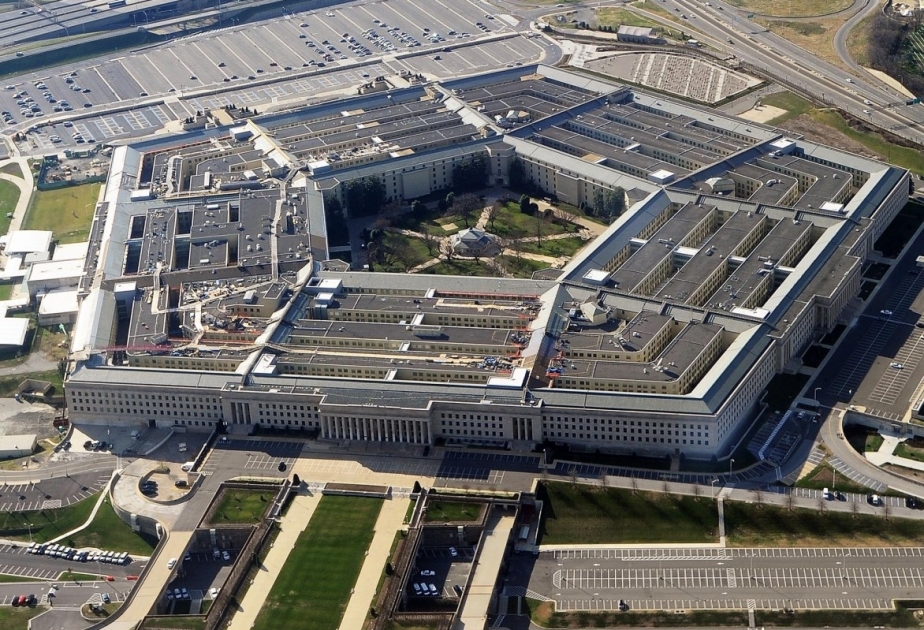Pentagon slashes weapons programs to stay under debt deal
The Biden administration struck a deal with congressional leaders last year to limit defense spending. And at the Pentagon, the knives are out, according to Politico.
The Defense Department plans to cut F-35 fighter jets, an attack submarine, Army helicopters and drones and Air Force overhead as it seeks to stay under the spending caps.
The adjustments come as the Pentagon plans to submit a budget request next month that funds the department at just under $850 billion in fiscal 2025, according to two U.S. officials and a congressional aide who, like others quoted for this story, were granted anonymity to discuss the military’s blueprint. That total is DOD’s portion of the federal spending levels laid out in the debt limit agreement President Joe Biden signed into law last summer, which caps overall national defense spending at $895 billion for the coming fiscal year.
Compared with DOD’s projected levels for fiscal 2025 outlined in its last budget submission, the $850 billion total amounts to a $10 billion cut, or more than 1 percent of the department’s budget.
One percent may sound small in the context of an almost trillion-dollar annual budget. But officials note that because pay raises for troops and other personnel bills are set in stone, the bulk of the cuts will need to come from weapons modernization programs.
“It’s horrific frankly, the impact that’s going to have,” Nathan Diller, a former House Appropriations Defense subcommittee staffer and retired Air Force colonel, referring to the cut coupled with a potential year-long continuing resolution. He spoke Wednesday at an Association for Uncrewed Vehicle Systems International conference.
Each of the military services is planning cuts to major weapons programs in order to comply with the caps. The Navy, for example, has been discussing plans to push back funding for its next nuclear-powered submarine, according to a congressional staffer and an industry official.
The Navy has funded two Virginia-class submarines a year since the late 1990s, at a cost of over $4 billion per boat. Under the proposal being floated, the Navy would request only one submarine for fiscal 2025, according to the staffer and industry official. USNI News first reported the Virginia-class sub proposal.
A Navy spokesperson did not respond to a request for comment.
Meanwhile, the Army recently announced a massive overhaul of its aviation programs, including shelving major helicopter and drone projects and putting that money toward aircraft the Army believes are most necessary on the modern battlefield.
The revamp includes canceling the long-planned replacement for the OH-58 Kiowa scout helicopter, known as the Future Attack Reconnaissance Aircraft; ending a service-life upgrade program for the Sikorsky UH-60 Black Hawk; delaying production of the Improved Turbine Engine, which was meant to power the new reconnaissance helicopter, AH-64 Apaches and Black Hawks; and retiring its fleet of AAI RQ-7 Shadow and AeroVironment RQ-11 Raven drones.
And the Air Force is expected to cut its purchases of the F-35 fighter jet by 18 percent this year, according to a third congressional staffer, on top of a major structural shakeup that would consolidate some of its major three-and four-star commands. The F-35 news was first reported by Reuters.
Air Force leaders said the reorganization will not require additional funding. Instead, the service plans to submit requests to move money from other accounts if needed. But submitting such requests “isn’t the answer” because that means the service is shifting funding from what appropriators told them to buy, a former congressional aide said.
The debt ceiling compromise, known as the Fiscal Responsibility Act, was agreed to last year by Biden and Capitol Hill Republicans to constrain discretionary spending in exchange for an increase in the federal borrowing limit to avoid a catastrophic default. House Republicans pushed to slash spending to rein in the deficit, and the final deal caps both defense and domestic spending for two years.
The deal caps national defense spending — which includes the Pentagon, nuclear weapons programs under the Energy Department and other national security programs — at $886 billion this year. For fiscal 2025, the second year of the deal, the cap is $895 billion, just a 1 percent increase.
The spending caps forced DOD to make tough choices about its funding priorities, said one of the U.S. officials.
The department has “must-pay bills for personnel and taking care of people,” the official said, adding that “quality of life and readiness have to be priorities.”



.webp)















